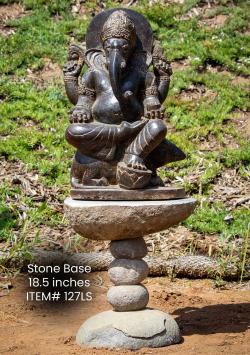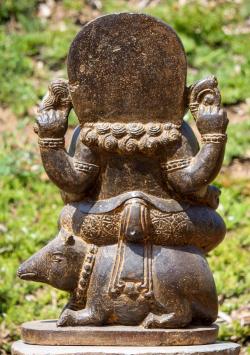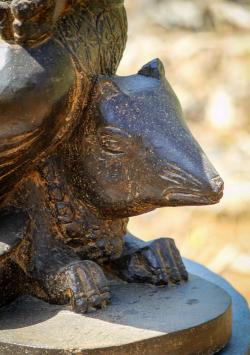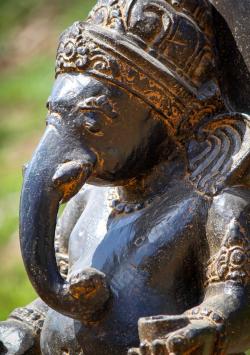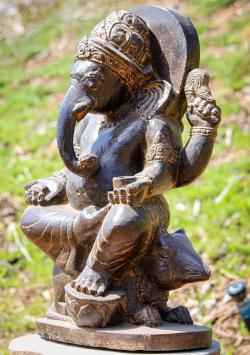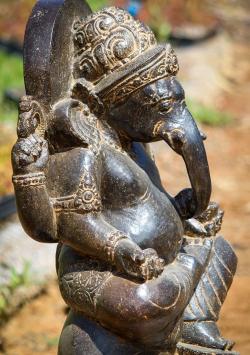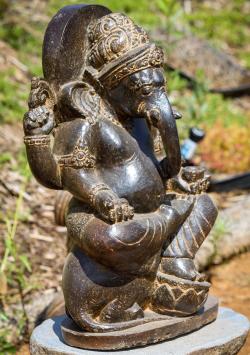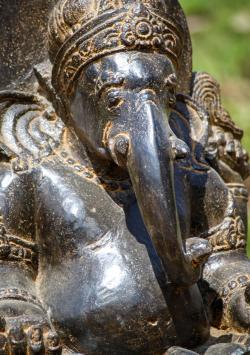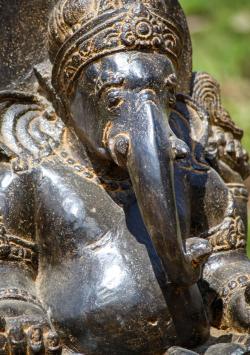This garden Ganesh statue is seated on his vehilcle Mooshika, the rat with one foot resting on a lotus flower. Ganesh is perfect for bringing the obstacle removing energy of Ganesh into any outdoor setting!
~A Hymn from Sri Bhagavat-Tathva~
The chubby, gentle, wise, elephant-headed Ganesh, or Ganesha, is one of Hinduisms most popular deities. He is the remover of obstacles, the deity whom worshippers first acknowledge when they visit a temple. He is also patron of letters and of learning; he is the legendary scribe who, using his broken tusk, which he often holds, wrote down parts of the Mahabharata epic. Ganesh is usually depicted colored red; he is pot bellied, has one tusk broken, and has four arms that may hold a pasam, a goad, and a pot of rice or sweetmeats. The sweet meats are held in a type of bowl known as a laddus. His appetite for these sweets is legendary and offerings of them are often left at his shrine.
Statues of Ganesh can be found in most Indian towns. His image is placed where new houses are to be built; he is honored at the start of a journey or business venture, and poets traditionally invoke him at the start of a book.
A pasam is a triple twine weapon. Each of the three twines represents, arrogance and conceit, Maya - the illusory nature of the real world, ignorance. In Hindu ideology weapons are a viewed as symbolic tools to destroy the ego rather than to cause any type of bloodshed. Goads (or elephant prods) are typically used to direct elephants. Goads are symbolic of how one should steer the soul away from the ignorance and illusions of this earthly world just as a mahout would steer an elephant away from any treacherous path.
Lava stone statues from Bali do not need much maintenance. The best way to maintain the statue is to simply dust the piece periodically to keep any dirt from accumulating. They can be used for both indoor and outdoor use.
Soap and warm water is the best way to maintain the statue. You can use a small brush to get into the small crevices of the statue like the hands and hair.
Lava stone's durability makes it perfect for cold winters and hot summers of any climate. The stone can stand up to the harshest conditions of heat and bitter cold. We suggest you bathe the sculpture at least once a year so that dirt does not collect on the sculpture. This will maintain the sculpture for your grandchildren and then their grandchildren!